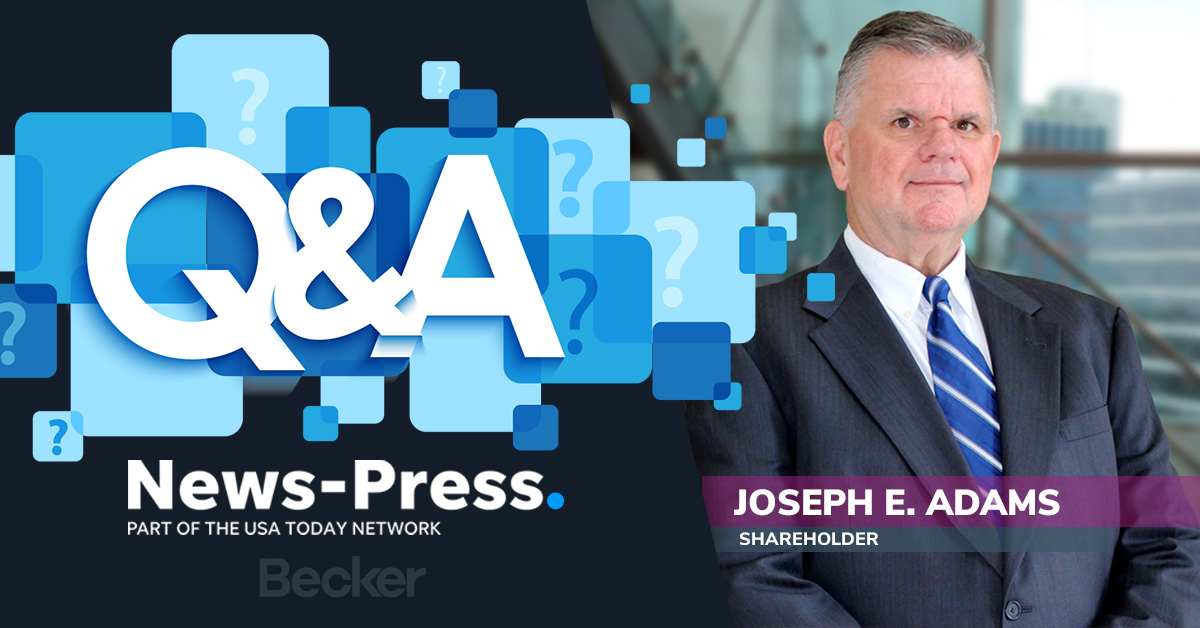“Condo Voting Terminology Explained” – News-Press

Q: Can you provide clarification on what constitutes a “quorum” of condominium unit owners. We sometimes struggle to distinguish between a majority of owners and a quorum. Could you explain how voting interests relate to quorum requirements? (J.D., via e-mail)
A: Although the terms are often used loosely, even by attorneys, it is important to understand the legal terminology that applies.
The first concept is the “voting interest,” which are the voting rights assigned to a condominium unit. In the vast majority of cases, there is one voting interest per unit, although the law also allows voting interests to be allocated based on relative unit square footage. For purposes of this explanation, I am going to proceed with the assumption that there is one voting interest per unit specified in the condominium documents.
The Florida Condominium Act requires that the bylaws specify the percentage of voting interests required to constitute a quorum at meetings of the members (unit owners). The statute goes on to state that a majority of the voting interests is required to constitute a quorum at a meeting of the members, unless a lower number is provided in the bylaws of the association.
Assume you have a condominium with 100 units and thus 100 voting interests. If the bylaws are silent on quorum requirements, 51 voting interests are required to be represented at the meeting to constitute a quorum. The bylaws may contain a lower quorum requirement, 30 percent is a fairly common standard. In this case, 30 units/voting interests would need to be represented at a meeting for a quorum to be established.
A unit can be “represented” at a meeting in one of three ways, in person, by proxy, or by electronic voting. A unit is represented “in person” when an individual authorized by the bylaws to vote for that unit physically shows up at the meeting. A twist on this is when a person “appears remotely” at a unit owner meeting, such as through a video conference platform. Under the law, these owners can also be considered “present” at the meeting, but only if the board has adopted a procedure that recognizes “remote participation” by owners in association owner meetings.
Representation at a meeting by proxy involves the voter for the unit designating a third party to appear at the meeting and act in their stead. The law also requires the use of a “limited proxy” for most items which require a unit owner vote, such as amendments to the condominium documents or voting on financial matters. A limited proxy is, for all intents and purposes, an “absentee ballot,” though the vote is technically cast by the proxy holder on behalf of the owner who gave the proxy.
Proxies must follow a legally prescribed form, and include the date, time, and place of the meeting. Proxies must be signed to be valid. Proxies can be transmitted to the association by mail, hand delivery (if there are facilities for same) or by electronic means, such as a scanned attachment to an email.
Finally, a unit’s voting interests can be represented at a meeting through electronic voting. E-voting requires an enabling resolution by the board, which must be noticed to owners 14 days in advance of its adoption. The association needs to make arrangements with a qualified vendor/platform host, who will set up a website where owners can log in through a secure platform and cast their votes.
The actual votes required to pass a measure vary significantly; some (e.g. permissible reserve waiver votes) are governed solely by statute. Others (e.g. material alteration votes) are usually governed by the condominium documents, with some basing required approval on the number of voting interests voting in favor at a meeting where a quorum is established, and others requiring approvals based on the total number of voting interests.
Joe Adams is an attorney with Becker & Poliakoff, P.A., Fort Myers. Send questions to Joe Adams by e-mail to jadams@beckerlawyers.com. Past editions may be viewed at floridacondohoalawblog.com.





